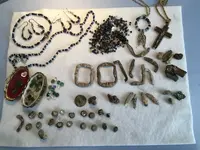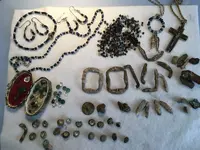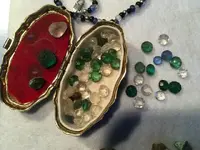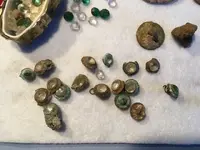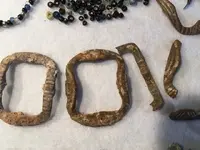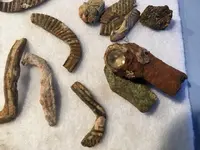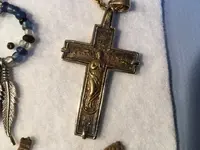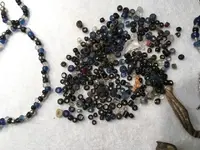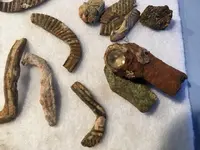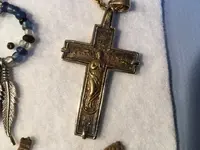Karen-
Welcome to T-net!! That's actually quite a collection of artifacts you have!! As far as valuation, I can only suggest you contact an appropriate professional to determine some kind of appraisal valuation...you may well be surprised!
I'm not sure how familiar you are with the history of the ship...so I'll give you alittle background. You may already have done some research, but if you havn't, here's alittle background for you...
According to the archives in Spain this frigate class Spanish merchant ship was officially called Nuestra Señora de los Milagros (Our Lady of Miracles) and was sailing near the Caribbean coast of the Yucatan on February 22, 1741 when it crashed into the coral reefs just offshore. She was 73 feet in length, with a keel of 60 feet, a beam of 20 feet and a draft of about 10 feet, and like most merchant ships of her time she was armed. She carried 16 small iron cannons and four swivel guns.
Captain Juan Bacaro and a crew of 69 set sail from Cadiz on November 30, 1740 with a ship packed full of the kind of goods that would fetch enormous prices when sold in the colonial port of Vera Cruz. Her cargo consisted of both registered and un-registered items, a common practice during her time. The registered cargo included an uninteresting and bulky 100 tons of pig iron, and 25 tons of tempered steel wire. Along with the heavy metal was another 50 tons of saleable household goods consisting of knives, spoons scissors, needles, buttons, buckles, writing quills, paper and glassware, window glass, walnut and almond oil, lavender and hand tools. Also listed were 750 barrels, 400 casks, 204 cases, and 21,200 bottles of brandy and wine. At least part of the unregistered cargo was known to be bales of English cloth and clothing.
The most notable recovered artifacts from the wreck are its cannons (several of which point out to sea at the entrance to Akumal Bay) and a large quantity of necklace crucifixes of different sizes and styles. Also recovered over the years are thousands of glass beads (usually clear or blue), brass belt buckles, coins and some gems.
The reason why the ship was wrecked has never been absolutely determined despite a sizable amount of archived records about the ship and her sinking. There is no record of severe regional storms at the time and nothing in the extensive British Admiralty records mentioning any attacks from Royal Navy ships. It is speculated that Captain Juan Bacaro decided to set a course to sail between the island of Cozumel and the mainland to avoid any British privateers or warships of the Royal Navy that might have been in the area.
Robert Marx spent an entire summer excavating and salvaging the site in the late 1950's....there is an account of that operation in his book " Treasure Lost at Sea". He evidently recovered quite abit of trade goods... yours seem very similar to some of his documented recoverys!!
Just an heads up...it was VERY common in the day to carry personal riches as undocumented cargo.... I would suggest it's entirely possible that some of the valuables aboard may have been gold, silver, gems and jewelry...
Best of luck, and best wishes...
ag



